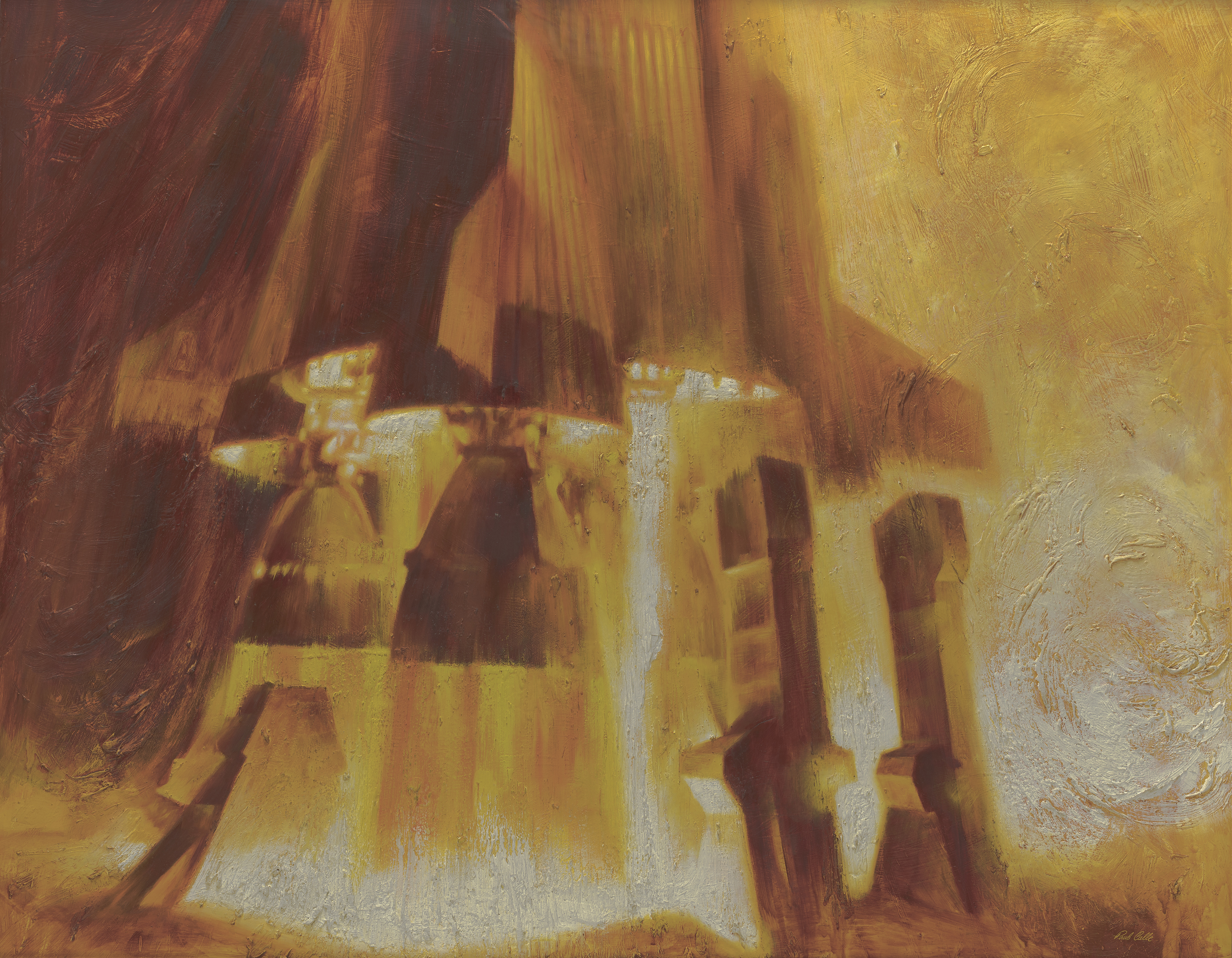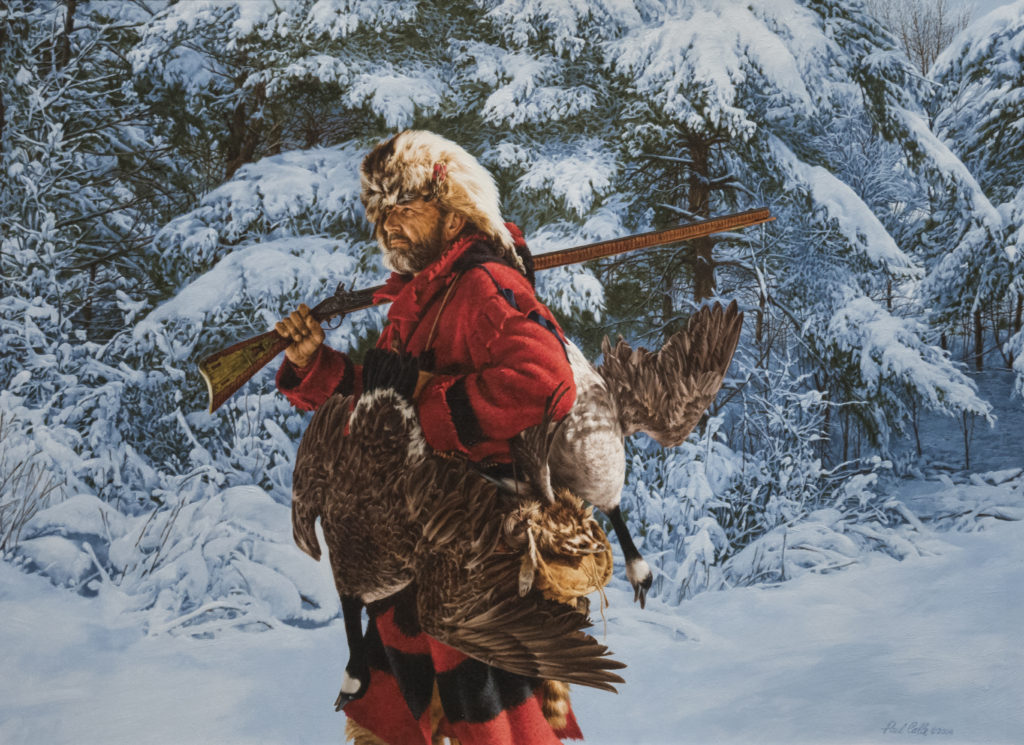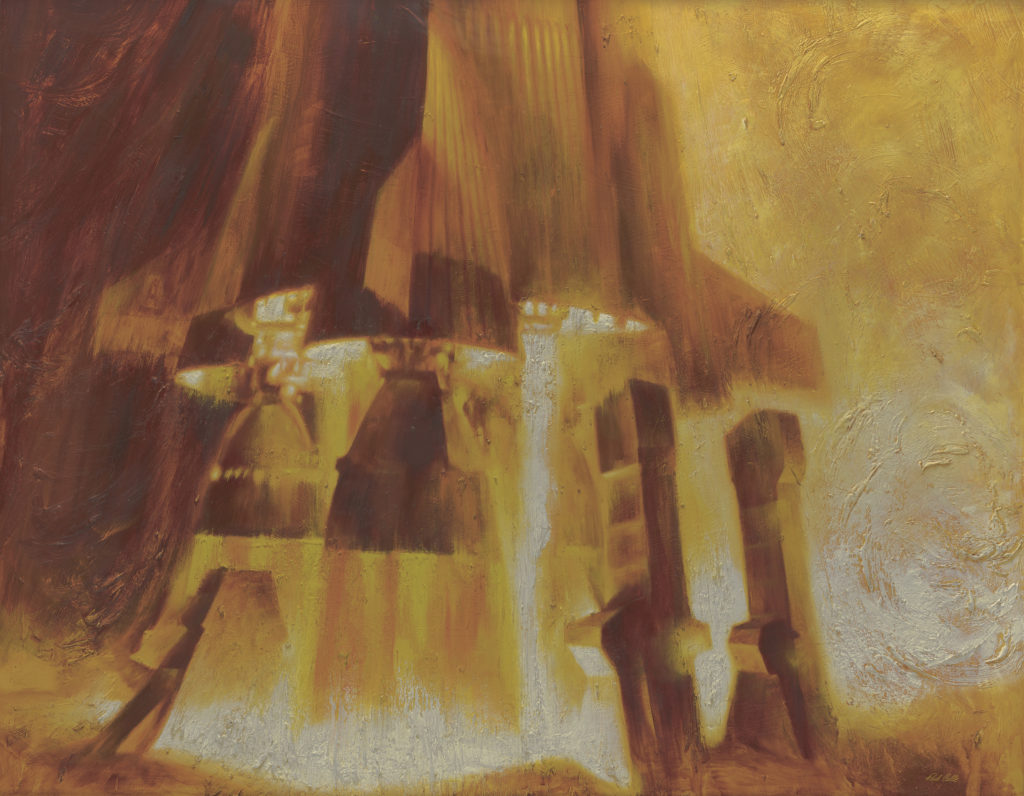Writer Shannon Severson
Photography Courtesy of Western Spirit: Scottsdale’s Museum of the West
[dropcap]E[/dropcap]xploration has always been at the heart of the American spirit. We are a culture that reveres those who dream, dare and do. Artist Paul Calle’s talent and passion for portraying in vivid detail the events and people responsible for shaping our history will be on display at Smithsonian affiliate Western Spirit: Scottsdale’s Museum of the West in a retrospective exhibition, “Paul Calle’s Life of Exploration: From the Mountains to the Moon,” Feb. 19 through Oct. 20.
The late Calle had a two-fold career, specializing in Western art and space art. The two subjects might seem incongruous at first, but he didn’t see it that way.
“I have always likened the image of mountain man John Colter, his moccasin-clad foot first stepping on the newly fallen snow of the Yellowstone valley, to the moon boot of Neil Armstrong, stepping in the dust of the moon’s surface at the Sea of Tranquility—two worlds apart, yet each at the edge of a new frontier,” Calle is quoted as saying in “Celebrating Apollo 11, The Artwork of Paul Calle,” a book written by his son, Chris Calle, and published in 2009.
The concept for the exhibition came from Western and Native American art and artifacts collector, Tim Peterson, who regularly collaborates with and loans his artwork to the museum. Coincidentally, his very first art acquisition as a young boy was a Calle print, “Something for the Pot.”
The Minnesota native has always been drawn to Calle’s love of the outdoors. Peterson worked closely with Calle’s son, Chris, and Dr. Tricia Loscher, assistant museum director of collections, exhibitions and research, to gather and curate the wealth of Calle’s work and personal items.
“Paul Calle was an important realist and his artworks feature rare, intricate details that interpret—as well as document—the United States’ great technological achievements, such as NASA, while aiding viewers in the enjoyment of his work,” says Loscher.
“With this exhibition’s breadth of exquisite work, we are enabling our members, locals here in the Phoenix metro area and visitors from across the globe to have an in-depth experience of this important American artist and illustrator who was a unique part of history in the making.
“We’re confident our guests will be awed by this exhibition, and Calle’s legacy will be remembered by generations yet to come.”
Peterson became close friends with Paul Calle and got to know the artist who ignited his love for Western art.
“I want to give people a sense of the diversity and variety of art that he worked on, as well as a perspective that he was truly an American icon in terms of history, his work with NASA, his illustration days and work with postage stamps and Western art,” says Peterson.
“I thought it would be an interesting opportunity for the museum to showcase not just his work, but to create an atmosphere where people realize that these Western artists weren’t just Western artists, and hopefully that brings in a new audience. It will appeal to a wide swath of people.”
Particularly important is the timing of this exhibition: 2019 marks the 50th anniversary of the Apollo 11 moon mission. Calle, who was an official artist of NASA, was present on the morning of that launch. As Neil Armstrong, Buzz Aldrin and Michael Collins ate breakfast, discussed the mission, suited up and walked out to board the spacecraft, Paul Calle sketched history as the only artist allowed to record the moment, having earned the trust of the NASA program during previous missions dating back to 1963.
Calle went on to create the iconic 1969 first man on the moon artwork and postage stamp, the most popular first day cover in history, and sold over 152 million copies. Chris was asked to create a commemorative version in 1989 and, for the 25th anniversary of the moon landing in 1994, father and son worked together to create an express mail and a 29-cent stamp.
“If there’s something he’s going to be remembered for, it’s the first man on the moon stamp,” says Chris. “It’s an iconic image and you don’t need to be a stamp collector to appreciate it.”
“Our museum is proud to honor the 50th anniversary of the Apollo 11 mission and the legacy of artist Paul Calle by sharing this landmark retrospective exhibition with our regional, national and international audiences,” said Mike Fox, CEO and director of SMoW.
Chris, an artist who does quite a bit of stamp design himself, recently had the honor of playing his father in the breakfast scene of Universal Pictures’ movie, “First Man.” It was an experience he will never forget, and an opportunity to continue his father’s legacy.
“It was amazing being in the movie and portraying my father, doing exactly what he did,” says Chris. “I used his exact sketchbook and pens and was there in the same moment my dad had been there. The director, Damien Chazelle, really cares about these moments of authenticity as a filmmaker and an artist.”
Chris notes that his father dedicated the final 30-plus years of his career to the West and painting Western scenes, as he was an integral part of the National Park Service’s “Artists in the Park” program. He traveled extensively, observing and sketching mountain men, Native Americans and the landscapes of the Western region, beginning with a sketch and creating full-sized pencil drawings of every one of his paintings, none of which he threw away. To create the fine details of his paintings, he used a very small paintbrush in the same manner as a pencil.
“It’s really important to see the originals of my dad’s paintings,” says Chris. “There’s so much vibrancy in the details of his originals. The texture comes through in all the tiny lines. There’s a textural quality and visceral feeling.”
Chris vividly remembers the many trips to national parks they took as a family, where his father’s love for nature and history was instilled in his children. He also remembers the studio he shared with his dad for 15 years, a converted Connecticut barn that sat over a stable full of horses and had no heat.
“The back steps were made from an old submarine staircase,” Chris recalls. “For the show, they’re re-creating a portion of his studio, his paintbrushes and easel. It’s very realistic. There are even some pallets that I didn’t clean, and many of the furs and Western material he used in his paintings. The studio aspect is a brilliant way of showing the environment of the artist.”
Calle, who grew up during the Great Depression, never threw away a pencil stub. Instead, he tossed them into a large glass bowl that became a fixture in his studio and will be part of the exhibit. Those pencils are testament to the time he spent planning and sketching every detail of his work, often spending 10-hour days in his studio. He would “solve problems” in the sketch phase of his work, before committing to paint. It’s the work ethic of an artisan, taking the time to refine his craft, line by line.”
“What dad taught me about pencil drawing is that it’s unforgiving. Once you have a mark on the paper, it’s in the paper, even if you try to erase,” says Chris. “He was a master of the use of negative space.”
Chris has enjoyed working with Peterson and Loscher, delving into all the work his father produced over the years, confident that audiences will learn and appreciate the broad scope of Calle’s art.
“He had these really interesting parts of his career and, for people who don’t know that, it’s going to be an eye-opening experience,” Chris points out. “He was who he was: his unabashed self.”
scottsdalemuseumwest.org










Comments by Admin